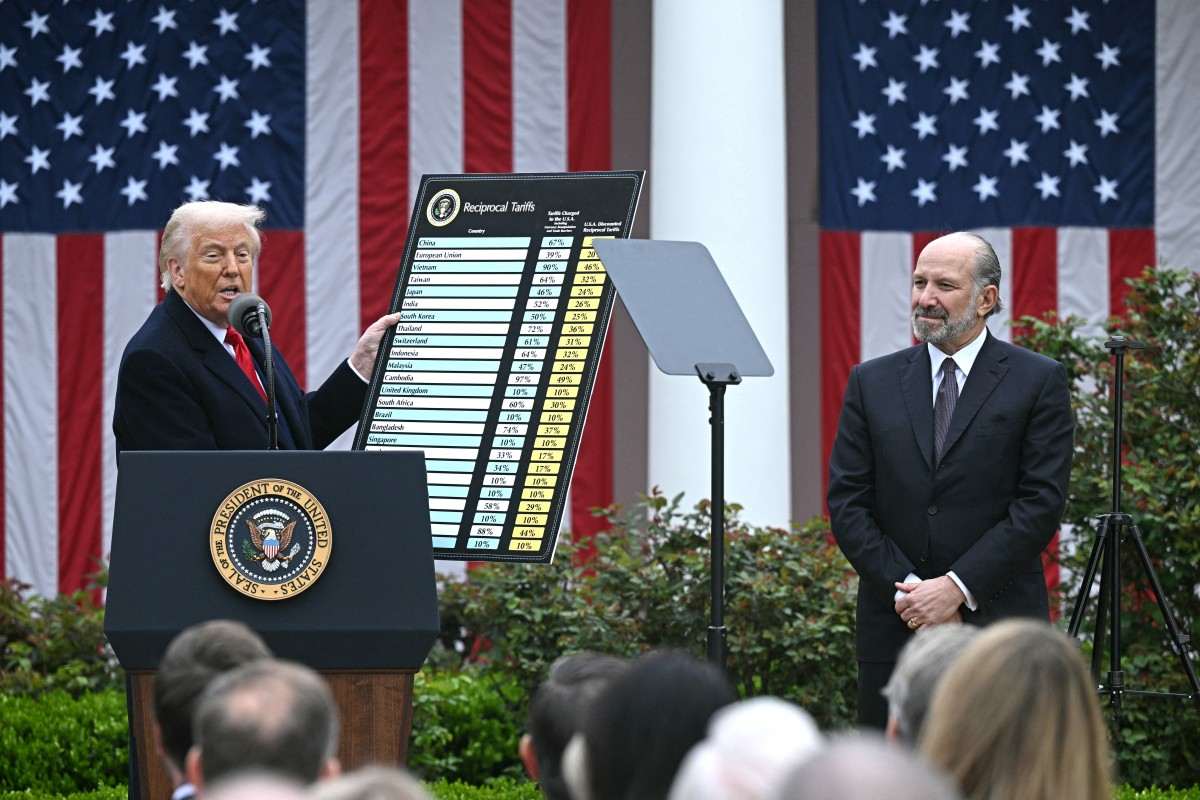Reuters reported that in the early morning of January 3, Vietnam time, President Donald Trump signed a decree imposing a 10% import tax on all goods entering the US, and raising the tax rate for more than 60 countries, including major trading partners such as China, the European Union (EU), Japan and India.
Speaking at the Red Garden of the White House, President Trump affirmed that this is a historic step to protect American workers, helping the domestic production sector no longer be "exposed" by other countries.
Mr. Trump called this a "declaration of Economic Independence", emphasizing that the US has suffered losses for too long and now is the time to regain the upper hand.
China is subject to the highest tax rate
China is the country most affected, having to bear a total of 54% of the tariffs, including the new 34% tariffs that Mr. Trump has just announced, combined with the previous 20% tariffs.
Chinese phones, clothing, electronic components and consumer goods will face significantly higher prices, causing great difficulties for US consumers.
In particular, a major change in the new tax policy is the removal of the de minimis regulation, which allows packages under $800 from China and Hong Kong (China) to enter the US without being taxed.
Starting from May 2, all orders from e-commerce platforms such as Temu, Shein and AliExpress will be taxed at 54%, causing commodity prices on these platforms to skyrocket.
A series of countries are subject to high taxes
Not only China, but other important trading partners have not escaped Trump's tariff storm.
The European Union is hit with a 20% tariff, a major blow to key export industries such as cars, food and wine. Japan is subject to a tax rate of 24%, South Korea 25%, India 26%, while Vietnam faces a high tax rate of up to 46%.
Countries such as Thailand, Indonesia, Pakistan, Bangladesh and Switzerland are also subject to a tax rate of 30% or more, causing many difficulties for their export businesses.
However, some special items such as pharmaceuticals, semiconductors, wood, gold and important minerals are still exempt from taxes, showing that the US still has strategic calculations in keeping supply to key industries.

The market is chaotic
Immediately after President Trump's announcement, the US stock market fell sharply, with a total outfloating capitalization of nearly 5 trillion USD in just the past few weeks.
Investors are concerned that trade tensions will disrupt the global supply chain, push up production costs and consumer prices, directly affecting the wallets of the American people.
Major companies such as Apple, Tesla, Nike, which depend on the international supply chain, are facing the risk of having to adjust production strategies or increase product prices to offset costs.
Small businesses are no exception, as input materials become more expensive, forcing them to cut labor or even close.
President Trump affirmed that tariff measures will help the US rebuild the manufacturing industry and reduce dependence on imports, especially from China.
He believes that high taxes will force companies to bring factories back to the US, creating jobs and boosting domestic economic growth. However, economic experts warn that the negative impacts could be much greater than the benefits Mr. Trump expects. Imported goods have become more expensive, causing people's living expenses to increase.
The risk of a global recession also increases as partner countries respond with similar measures, reducing trade and investment flows between countries.
List of counterpart tariffs announced by President Donald Trump
China: 34%
European Union: 20%
Korea: 25%
India: 26%
Vietnam: 46%
Taiwan (China): 32%
Japan: 24%
Thailand: 36%
Switzerland: 31%
Indonesia: 32%
Malaysia: 24%
Cambodia: 49%
UK: 10%
South Africa: 30%
Brazil: 10%
Bangladesh: 37%
Singapore: 10%
Israel: 17%
Philippines: 17%
Chile: 10%
Australia: 10%
Pakistan: 29%
Turkey: 10%
Sri Lanka: 44%.
Colombia: 10%











